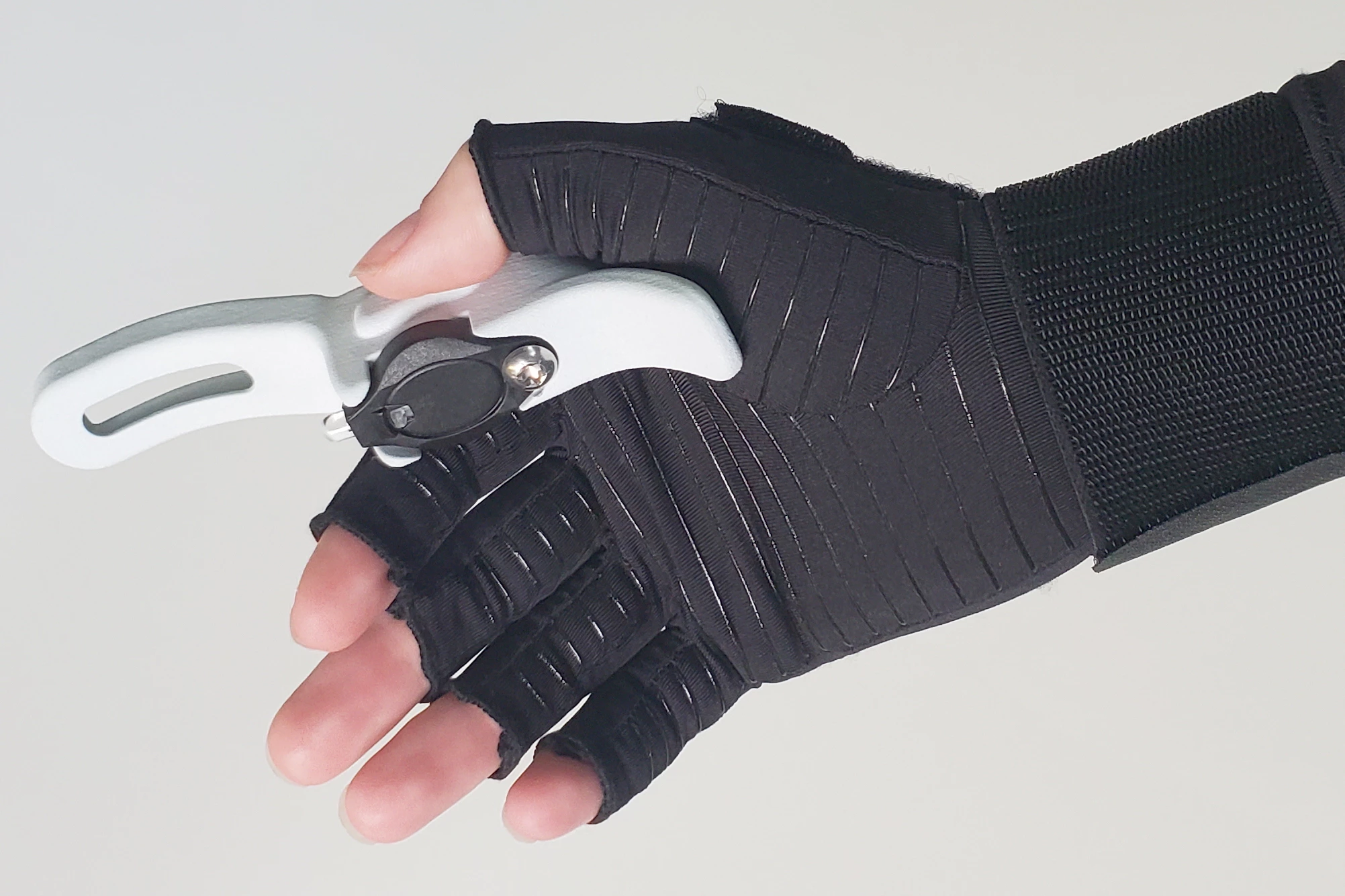It can be difficult for blind people to learn to read braille, as they don't have any way of seeing which character the dots that they're feeling represent. That's where the BrailleWear glove comes in, as it verbally tells them.
The glove is being developed by assistive tech startup ORama AI. Co-founder Kushagra Jain was inspired to invent the device while volunteering at an institute for the blind in India, where he discovered that 90% of visually impaired people cannot read braille.
Incorporated into the glove is an electronics module located between the thumb and index finger, which contains a small camera and an LED light. That light shines on printed braille dots at an oblique angle, causing each one to cast a black shadow onto the surrounding white paper.
The resulting pattern of high-contrast shadows is easily imaged by the camera, allowing that pattern to be matched to the corresponding braille character by AI-based software. A synthetic voice emitted by a speaker on the back of the glove then verbally tells the user which character it is, as they feel it for themselves. The idea is that the user will eventually be able to identify each character by touch alone, and will no longer require the glove.

"We are looking for and have been working with a few industry partners to commercialize and scale the glove," co-founder/president Lyon Li told us. "We have been working with Perkins Institute for the Blind for the last six months and met with American Print House at CES. We are working with Perkins to continue to iterate on the glove to increase its accuracy and effectiveness, and look forward to working with APH to find effective ways to distribute the glove."
Li added that he expects the BrailleWear glove to be commercially available by the end of the year, at a targeted price of US$300.
And as an interesting side note, scientists at the Georgia Institute of Technology are developing a braille-teaching glove of their own, that works by buzzing the user's fingers.
Source: ORama AI





